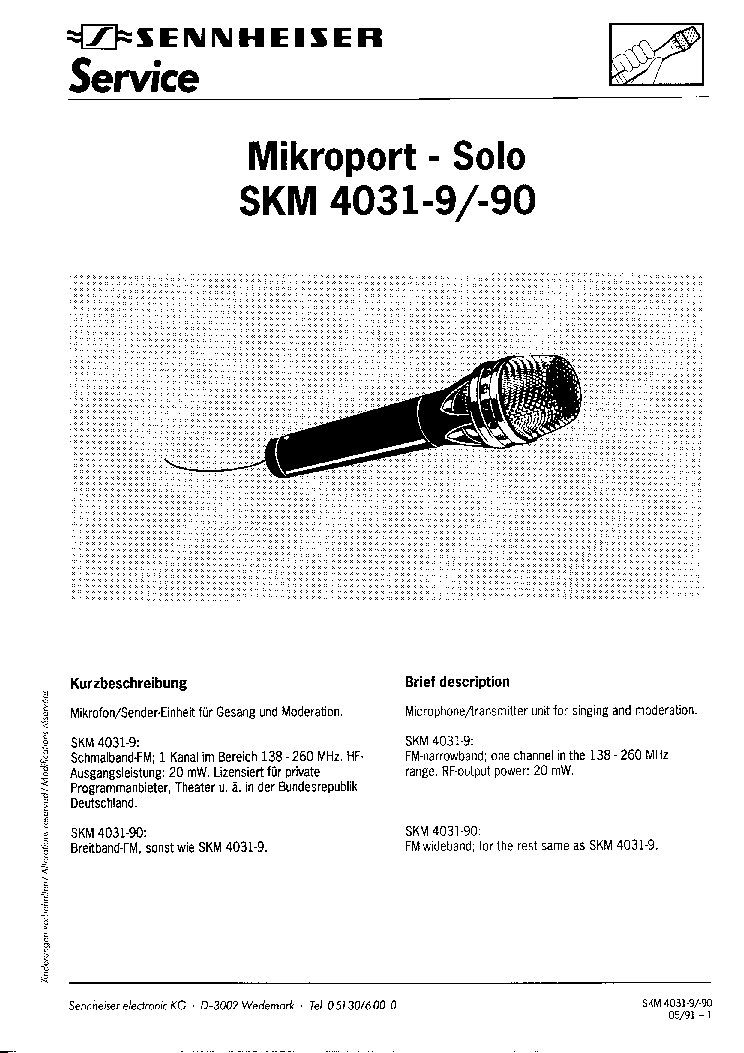For an animated instruction manual, visit the respective product pages at www.sennheiser.com. • Refer all servicing to qualified service personnel. Servicing is required if the devices or the ma ins unit have been damaged in any way, liquid has been spilled, objects have fallen inside, th e devices have been exposed to rain or mois.

Adobe photodeluxe home edition 40 free download. Wireless mic systems are a popular option for use in video production, and they typically work right out of the box—without requiring you to fiddle around with the settings. Even though you can use these systems right away, they’re designed to be versatile, and they offer some important features that can help you avert potential disasters. This article provides simple instructions on how to scan the frequencies in order to avoid interference, and explains how to adjust the audio levels to get optimal results.
You’ll come away knowing all of the important stuff that isn’t obvious the moment you first pop one out of the package. One of the features of the Sennheiser G3 systems is the availability of 1,680 frequencies; however, if the kit worked the first time you set it up, why would you ever futz with it?
When you give up the reliability of a hardwired connection and go wireless, you run the risk of experiencing interference. Everything could be running smoothly one moment, but you could get hit with interference at any time, and it’s helpful to know how to remedy the situation. The Sennheiser G3 systems have 20 Banks of frequencies with 12 Presets each. The Presets within these Banks were chosen by Sennheiser to help you avoid common pitfalls that are often encountered when operating wireless mics.
For example, if you're using more than one Sennheiser G3 wireless system at the same time and both systems are in the same frequency range (A, B or G), you can avoid intermodulation-distortion issues by setting both systems to operate on the same Bank. How are you supposed to manage that much stuff when all you want to do is to capture the dialog of a simple sit-down interview? The key is to master the “Easy Setup” function on the. Easy Setup scans all 1,680 frequencies, locks out frequencies that are occupied by other signals, and switches the current channel of your receiver to a new one that’s presently free of interference.
After you use the Easy Setup feature on the receiver, you must use the Sync feature on the receiver to beam the new channel to the transmitter wirelessly. Instructions for both processes are provided below. How to Scan Frequencies on a Sennheiser EK 100 Receiver 1) When the receiver is powered on, press the Set button once (this puts the receiver into Menu mode).
Next, press either of the arrow keys until Easy Setup is displayed, and press the Set button again to enter into the Easy Setup mode. 2) Using the arrow keys, select Scan New List from the Easy Setup menu, and press the Set button again to begin scanning. 3) The display will read Scan New List, and an animated progress bar will move across the screen. After about 55 seconds, the display will inform you how many Banks and Free frequencies are available for use.
Press the Set button twice to Store the new channel. Then press the arrow keys until Exit is displayed in the Easy Setup menu, and press Set to exit. You can then exit the Menu mode by quickly pressing the On/Off button, or by using the arrow keys to navigate to the Exit option in the menu, and pressing Set. Now your EK 100 diversity receiver will be set to a new channel that’s free of interference; however, you must Sync the new channel to your transmitter. How to Sync the EK 100 Receiver with a Sennheiser G3 Transmitter 1) When the EK 100 receiver is powered on, press the Set button once (this puts the receiver into Menu mode). Next, press the arrow keys until Sync is displayed, and press the Set button again to enter into Sync mode. The word “sync,” with a black triangle graphic, will fill the display of the EK 100 receiver.
2) With the battery doors open on both the EK 100 receiver and (the transmitter must be powered on), hold the two units face to face, one foot away from one another or closer. When the infrared beam from the EK 100 successfully syncs the new channel, a check mark will appear beside the word “sync” on the display, and the receiver will return to Menu mode. 3) The receiver and the transmitter will now be operating on the same frequency. You can exit the Menu mode on the receiver by quickly pressing the On/Off button, or by using the arrow keys to navigate to the Exit option in the menu, and pressing Set. Tips • If you're syncing the receiver with an, opening the battery door isn't necessary, because the infrared sensor is beside its display. • If you, anyone on your crew, or your on-camera subjects have mobile phones, smartphones or tablets, make sure to turn them off when you’re working.